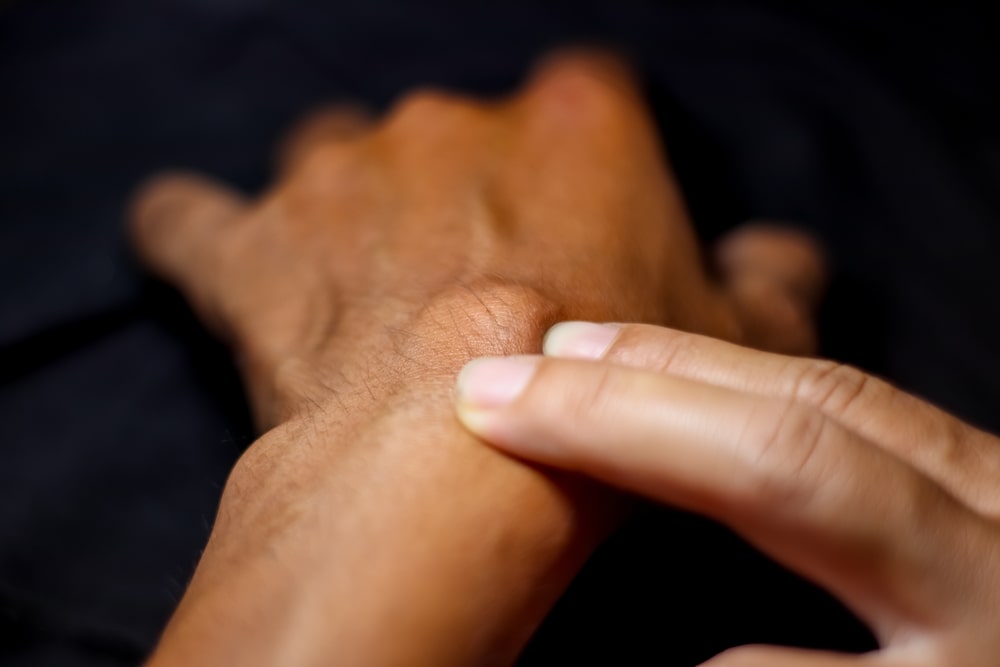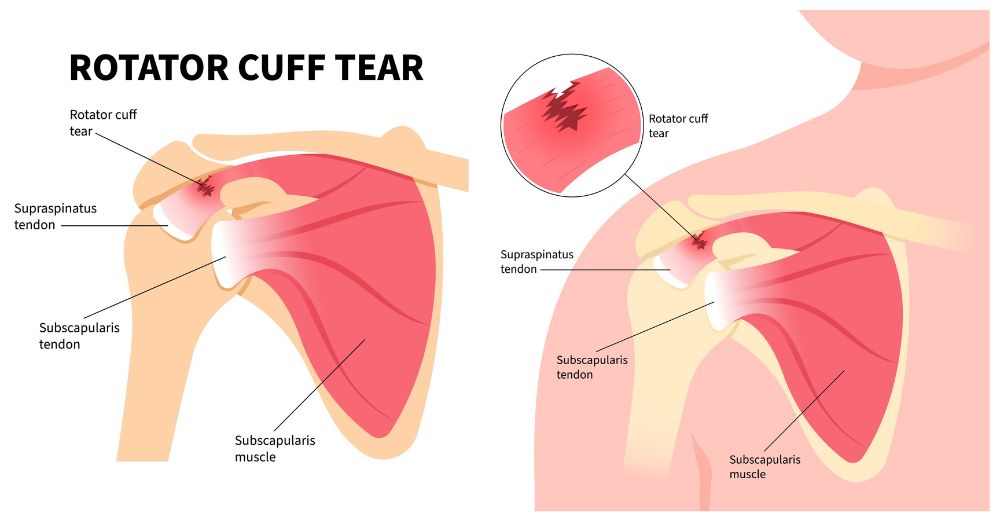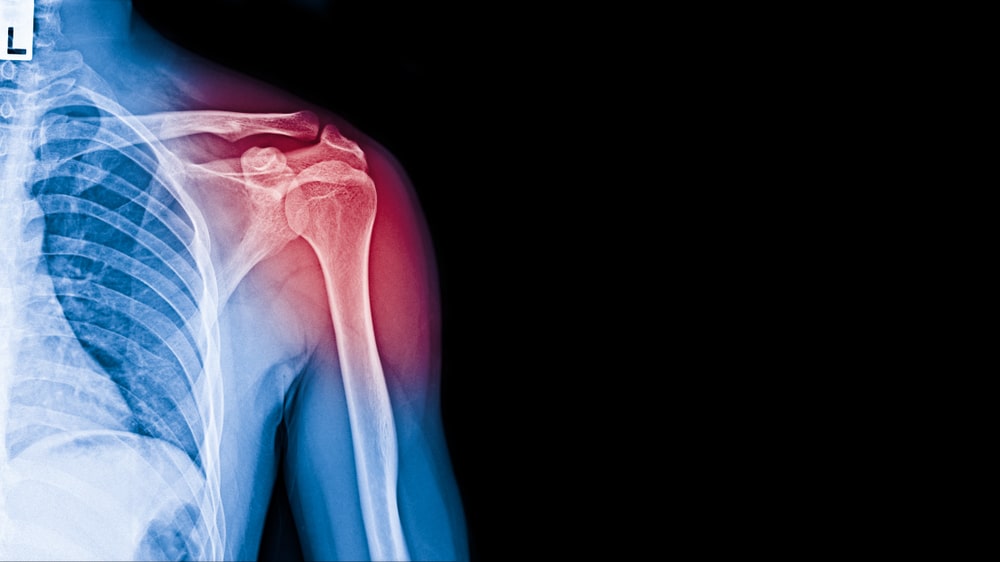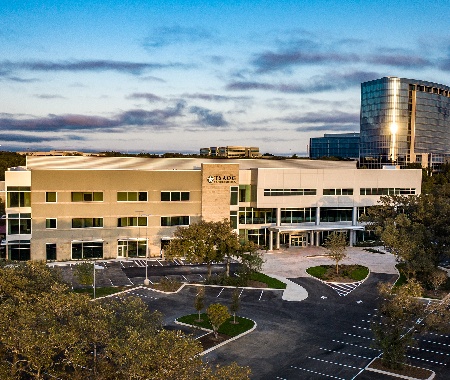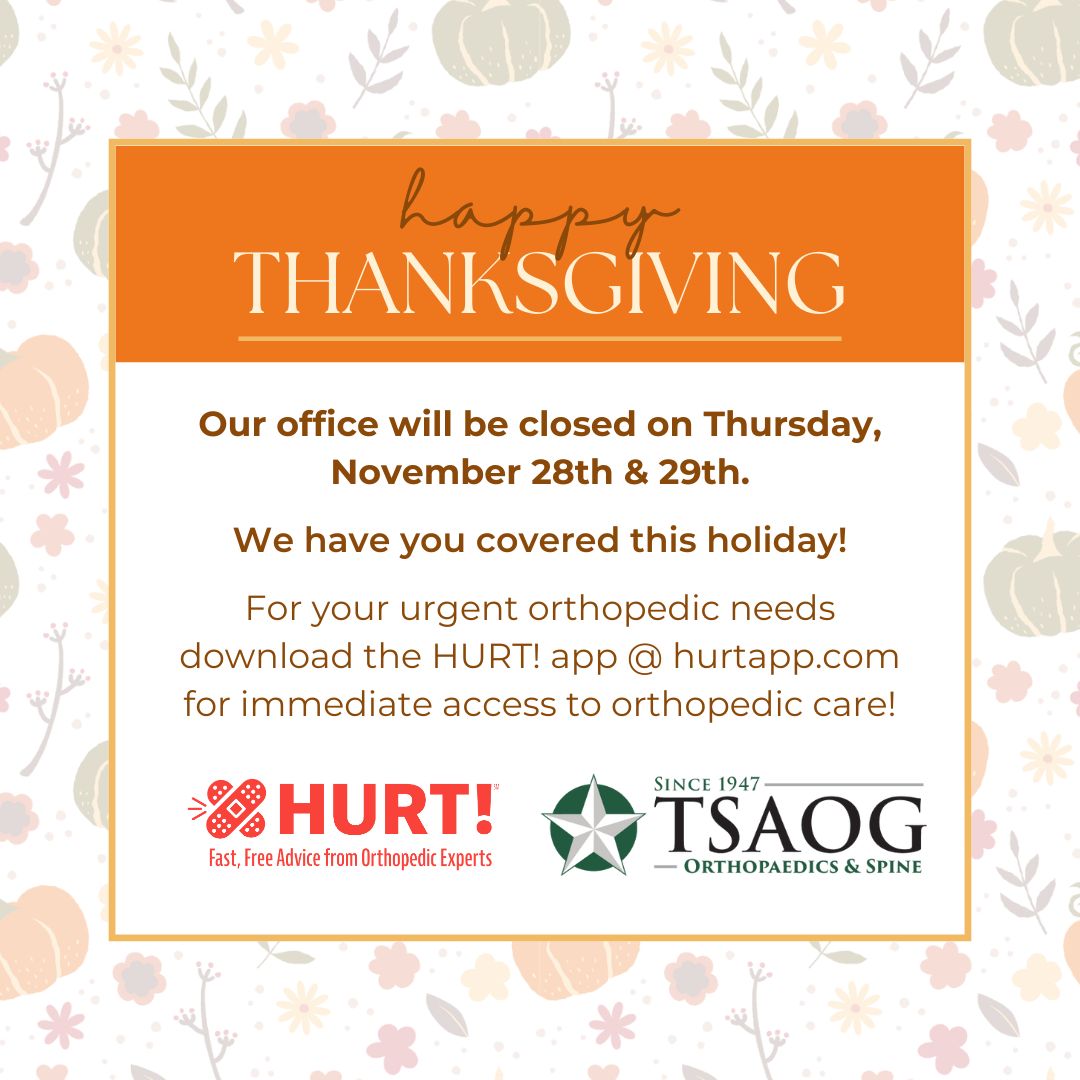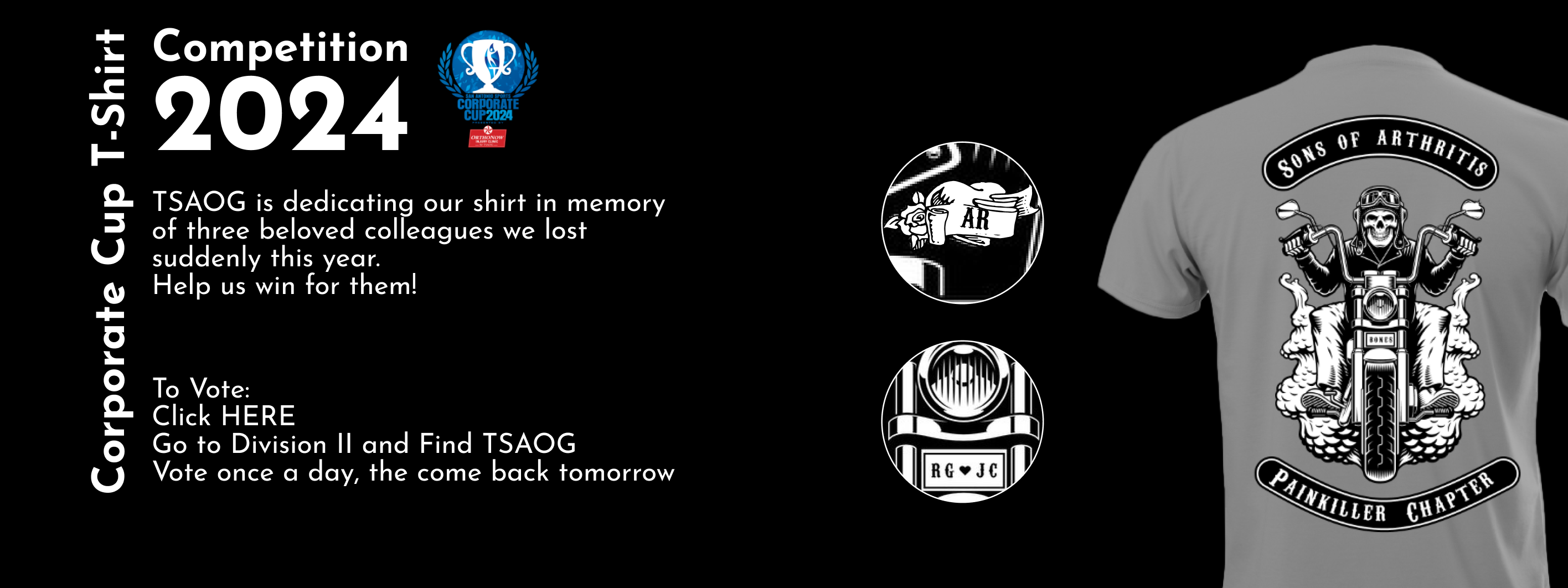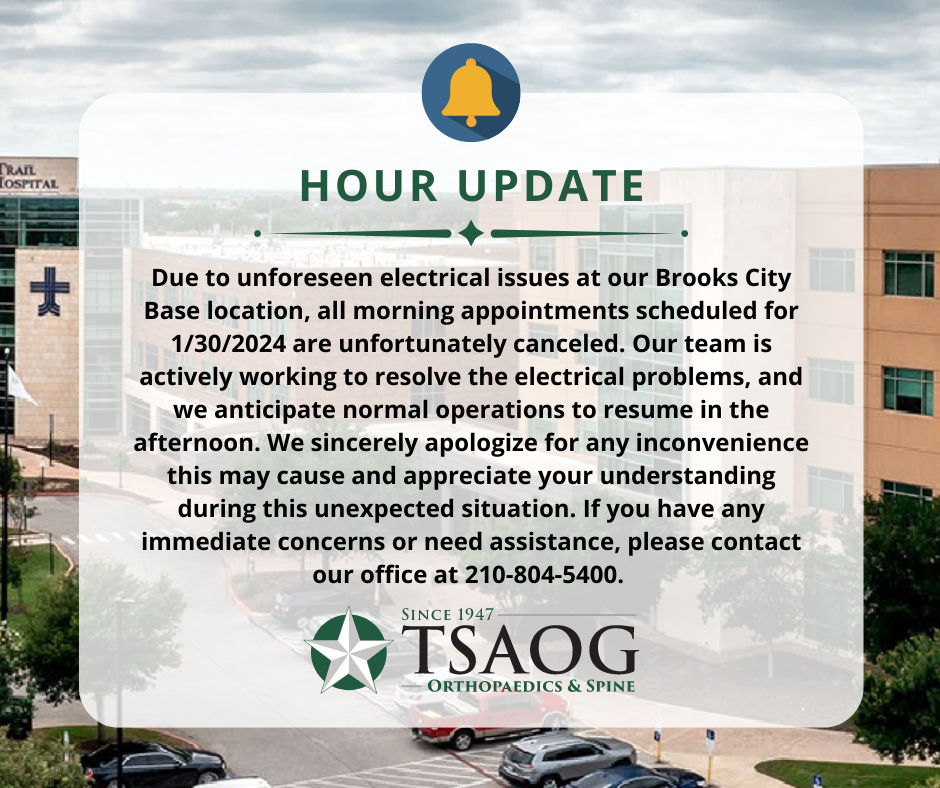Reviewed by Doctor David Espinosa
Ganglion cysts are noncancerous lumps that commonly develop along the tendons or joints of the wrists or hands. They can also appear on the ankles and feet. These cysts are filled with a jelly-like fluid and can vary in size. Understanding ganglion cysts, their causes, symptoms, and available treatments can help manage this condition effectively. Join us as we explain the causes, treatment options, and when to see a doctor.
What is a ganglion cyst?
A ganglion cyst is a round, fluid-filled lump typically forming near the joints or tendons. These cysts are usually noncancerous and range in size from a pea to a golf ball. The fluid inside a ganglion cyst is thick and sticky, similar to the fluid that lubricates joints and tendons.
Ganglion cysts form when synovial fluid leaks out of a joint or tendon sheath and accumulates in a sac. The exact mechanism is not fully understood, but it is believed that trauma or repetitive stress on a joint may contribute to the formation of these cysts. The cysts can appear suddenly or develop gradually over time.
Common Locations
- Wrist and Hand: The most common location for ganglion cysts on the wrist or hand. They develop on the back of the wrist or the palm side.
- Ankle and Foot: Less commonly, ganglion cysts can form on the top of the foot or around the ankle.
- Other Areas: Although rare, ganglion cysts can also appear on the knee, shoulder, or spine.
Ganglion Cyst Causes
The exact cause of ganglion cysts is unknown, but several factors may contribute to their development.
Trauma
One theory is that trauma causes the joint tissue to break down, forming small cysts that then join together into a larger, more noticeable mass. Repeated injuries or overuse of a particular joint can increase the risk of developing a ganglion cyst. Activities like heavy lifting or contact sports can exacerbate this risk.
Joint or Tendon Irritation
Chronic irritation of a joint or tendon can lead to the formation of a ganglion cyst. The irritation can be due to repetitive motion, such as typing or certain sports activities. The constant stress and movement cause the joint to react by producing excess synovial fluid, forming the cyst.
Genetic Factors
Ganglion cysts may have a genetic component. If a family member has had one, there is an increased likelihood that others in the family will develop one as well.
Underlying Joint or Tendon Issues
Conditions that affect the joints or tendons, such as arthritis, can increase the risk of developing ganglion cysts. These conditions cause changes in the joint or tendon environment, which may promote cyst formation. Chronic joint inflammation creates an environment conducive to cyst development.
Ganglion Cyst Symptoms
Ganglion cysts can cause various symptoms, depending on their size and location.
Visible Lump
The most noticeable symptom of a ganglion cyst is a visible lump. This lump is usually round or oval, and its size can fluctuate. The cyst may grow larger with increased activity and shrink when at rest. The lump can be soft or firm to the touch.
Pain and Discomfort
While ganglion cysts are often painless, they can cause pain or discomfort if they press on nerves. This pain can be sharp or dull and may increase with joint movement or pressure on the cyst. Activities that involve repetitive motion or strain can exacerbate the pain.
Reduced Range of Motion
A large cyst or one located near a joint can limit the range of motion, making it difficult to move the affected joint fully. This can interfere with daily activities and tasks, making simple movements like gripping objects or bending the wrist challenging.
Numbness and Tingling
If a ganglion cyst presses on a nerve, it can cause numbness, tingling, or muscle weakness in the affected area. These symptoms are more common when the cyst is located near the wrist or hand. Persistent numbness and tingling can significantly impact hand function.
Ganglion Cyst Treatment Options
Treatment for ganglion cysts varies based on the severity of symptoms and the patient’s preferences. Both non-surgical and surgical options are available.
Non-Surgical Treatments
- Observation
Often, ganglion cysts do not require treatment and may resolve independently. If the cyst is not causing pain or interfering with daily activities, a doctor may recommend a period of observation to monitor any changes.
- Immobilization
A brace or splint can help immobilize the affected joint, reducing activity and potentially shrinking the cyst. Immobilization can also help alleviate pain by minimizing joint movement.
- Aspiration
Aspiration uses a needle to drain the fluid from the cyst. The procedure is typically performed in a doctor’s office under local anesthesia. While aspiration can provide relief, the cyst may recur if the underlying cause is not addressed.
Surgical Treatments
- Ganglionectomy
A ganglionectomy is a surgical procedure to remove the cyst. This option is considered when non-surgical treatments are ineffective or the cyst causes significant pain or limitations. Depending on the cyst’s location and size, the surgery can be performed using an open technique or arthroscopically.
- Risks and Recovery
As with any surgery, there are risks associated with ganglionectomy, including infection, nerve damage, and scarring. Recovery time varies, but most patients can return to normal activities within a few weeks, with full recovery taking a few months.
When To Seek a Doctor for Ganglion Cyst
It is important to seek medical advice if you experience:
- Persistent Pain: Pain that does not improve with over-the-counter pain relievers or home treatments should be evaluated by a doctor to determine the underlying cause and appropriate management.
- Changes in Size or Shape: If the cyst grows rapidly or changes in shape, it should be examined to rule out other conditions and ensure it is not indicative of a more serious issue.
- Numbness or Tingling: Any numbness, tingling, or weakness in the affected area warrants a medical evaluation to assess potential nerve involvement and prevent further complications.
- Interference with Daily Activities: If the cyst limits your ability to perform daily tasks or participate in activities, medical intervention may be necessary to restore function and improve your quality of life.
Common Ganglion Cyst FAQ’s
Ganglion cysts can be a source of concern and curiosity for many people. To help you better understand the condition, we have compiled answers to some of the most frequently asked questions about ganglion cysts. Whether you’re dealing with a ganglion cyst yourself or seeking information for a loved one, these answers will help address common concerns and provide useful insights into managing this condition.
What happens if a ganglion cyst is left untreated?
In many cases, ganglion cysts are harmless and do not require treatment. They may remain the same size, grow, or even disappear on their own. However, if a cyst causes pain, limits movement, or affects daily activities, it should be evaluated by a healthcare professional. Leaving a symptomatic cyst untreated can lead to chronic discomfort and potential complications.
What shrinks a ganglion cyst?
Ganglion cysts may shrink or disappear with rest and reduced activity of the affected joint. Immobilization with a brace or splint can also help. Aspiration, where the cyst is drained of its fluid, can temporarily shrink the cyst, but there is a chance it may recur. In some cases, the cyst may resolve without any intervention.
What worsens ganglion cyst?
Activities that put stress on the affected joint can worsen a ganglion cyst. Repetitive motions, such as typing, sports, or heavy lifting, can increase the size of the cyst or exacerbate symptoms. Trauma or injury to the area can also worsen the cyst. It is important to modify activities and protect the joint to prevent aggravation.
How long do ganglion cysts last?
The duration of a ganglion cyst varies. Some cysts may resolve within a few weeks to months without treatment, while others may persist for years, especially if they are not causing significant symptoms. Treatment can speed up the resolution, but recurrence is possible. Regular monitoring and follow-up with a healthcare provider can help manage the condition.
Do ganglion cysts go away by themselves?
Ganglion cysts can go away on their own, especially if they are small and do not cause symptoms. Spontaneous resolution is more common in cysts that develop without a clear cause. However, cysts that are large, painful, or associated with joint or tendon issues are less likely to disappear without treatment. Observation and conservative management are often recommended for asymptomatic cysts.
By recognizing the signs and symptoms of ganglion cysts and seeking appropriate treatment, individuals can reduce pain, restore function, and prevent recurrence.
If you have any concerns about a lump or cyst near your joints, schedule an appointment with TSAOG today.
